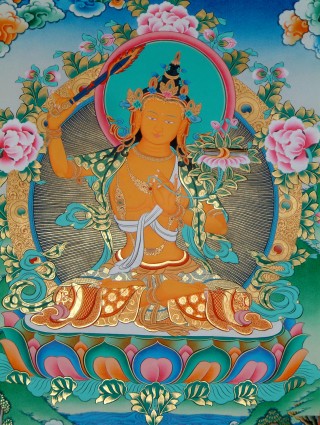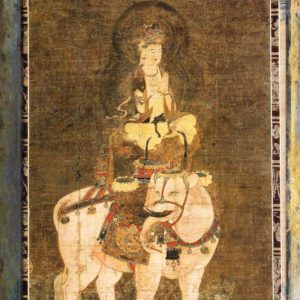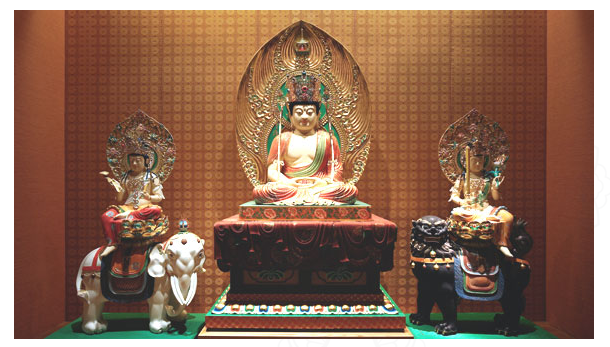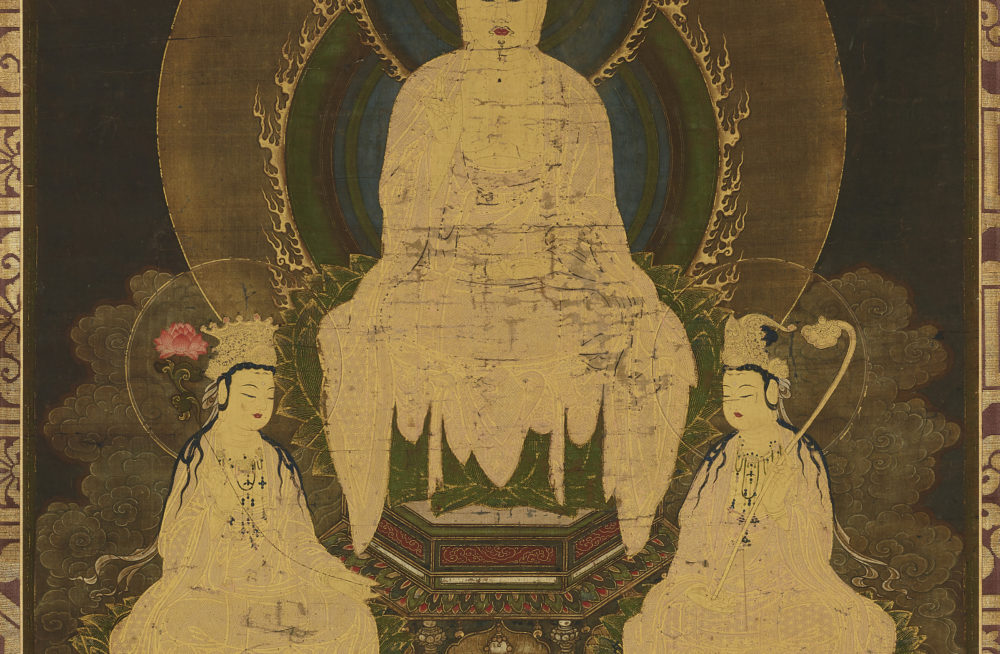On Buddhist altars, you will often see three figures: the Sakyamuni Buddha in the center, Manjushri, the wisdom bodhisattva, on one side, and Samantabhadra, the compassionate action bodhisattva, on the other. Like all spiritual iconography, this conveys something important. In this case, it depicts the strength and wholeness that comes from joining wisdom with skillful means.
I happen to have an amateur curiosity about iconography. It’s so fascinating to go into an old cathedral and notice all the intentional details they included in order to tell a story and communicate spiritual principles. Nothing was added into the design by accident, or only for aesthetic reasons. So today, I want to talk more about these two Buddhist icons, because they can offer us a way to understand what it means to practice skillful means. Art can be such a good teacher.

Manjusri embodies prajna wisdom. Manjusri first appeared in Mahayana Buddhist literature around the 4th century. By the 6th century, he was a major figure, one everyone would recognize. In Sanskrit, his name means “he who is noble and gentle.” Manjusri is often depicted carrying the Prajna Paramita Sutra in one hand and a sword in the other. The sword is a vajra sword, which is translated as both “diamond” and “lightning bolt.” In both cases, the vajra sword cuts through disillusionment, and is a depiction of the true reality of shunyata emptiness that is central to the Buddhist understanding of wisdom.
(Details to notice in the icon above: the flaming sword in Manjusri’s hand, and the scroll sitting on a flower leaf in the other.)

Samantabhadra embodies compassionate action and practice. In other words, Samantabhadra is an icon of skillful means. Depicted sometimes as a man and other times as a woman, Samantabhadra’s name in Sanskrit means “One who is All-Pervading Good.” S/he is thought to protect teachers of the dharma, those who instruct others in how to practice compassionate living. Many times, you see him/her riding an elephant. It’s very rare to see Samantabhadra depicted alone; as compassionate action, s/he can only be present in the context of the wisdom s/he seeks to embody.
Together, these three figures make up the sakyamuni trinity.

When these figures are set on an altar during meditation, they invite the meditator to contemplate how enlightened living becomes embodied through wisdom and compassionate action. They invite us to ask how our own marriage of wisdom and skillful means may bring about goodness for all. When we seek to be noble and gentle, compassionate and wise, we faithfully travel the way of the bodhisattva.
This post is part of the Paramita Project, where I’m practicing a paramita each month. Read all my posts on skillful means here.




